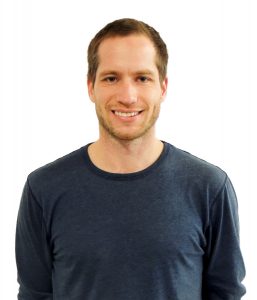Project Description
Home / Members / Graduate Students / Christopher Wyenberg

RESEARCH AREAS:
- Quantum Electrodynamics (Superradiance)
- Relativity of Entanglement
Foundational Quantum Mechanics and the Measurement Problem
CONTACT:
CHRISTOPHER WYENBERG
Doctoral Student;
Department of Physics and Astronomy, Western University
I am currently a PhD candidate in the Department of Physics at Western University, researching a multi-atomic quantum electrodynamical phenomenon known as Superradiance.
I obtained my MSc in 2009 from the Department of Applied Mathematics at Western, where my research under Dr. Vladimir Miransky explored quantum mechanical models of graphene conductivity. During those years I was given wonderful opportunities to explore advanced topics in general relativity and quantum field theory at the Perimeter Institute, which led to my current fascination with foundational questions in theoretical physics.
While working in industrial robotics for a few years following my MSc, I found my extraprofessional interests consistently turning to the measurement problem of quantum mechanics as well as interpretations of quantum field theory. I decided to return to Western in 2018 to study under Dr. Martin Houde, whose practical calculations in quantum electrodynamics closely neighbour those topics which I find so captivating. As a member of the Rotman Institute, I am excited to explore the philosophical concepts and thought experiments which connect my research to foundational quantum mechanics, including exploration of the measurement problem in the context of quantum electrodynamics.
In my free time I enjoy running, woodworking, and video chatting with my nephew and nieces.
I research a quantum mechanical phenomenon of intense radiation known as superradiance (SR) with applications to astrophysics. SR describes enhanced photon emission during the non-unitary evolution of an ensemble of molecules interacting with a quantized radiation field coupled to the environment (or measurement apparatus). In the semi-classical limit SR’s signature feature of quadratic intensity scaling with population size is simply understood as a coherence phenomenon, but in the quantum mechanical limit the effect is understood as an emission probability enhancement caused by a high degree of entanglement to the molecular energy states explored during the total system evolution.
I research realistic modifications to the idealized system evolution in the semi-classical picture, in Schrodinger and Heisenberg representations, and in relativistic (single particle Dirac) models. I am currently researching the degradation of coherence within velocity distributions, the Lorentz transformation of SR from highly relativistic sources, and the efficient analysis of fully 3+1-dimensional SR systems via spherical Bessel mode quantization. These realistic generalizations have important applications to modelling astrophysical environments, and additionally present novel contexts for exploring such theoretical concepts as, for example, the relativity of entanglement.
Rajabi, M. A. Chamma, C. M. Wyenberg, A. Mathews, and M. Houde. (2020) A simple relationship for the spectro-temporal structure of bursts from FRB 121102. Monthly Notices of the Royal Astronomical Society, Volume 498, Issue 4, November 2020, Pages 4936–4942.
E. Bannan, W. B. Handler, C. M. Wyenberg, B. A. Chronik, and S. P. Salisbury. (2013) Prediction of Force and Image Artifacts Under MRI for Metals Used in Medical Devices. IEEE/ASME Transactions on Mechatronics. Vol 18, Issue 3.
P. Gusynin, V. A. Miransky, S. G. Sharapov, I. A. Shovkovy, and C. M. Wyenberg. (2009) Edge states on graphene ribbons in magnetic field: Interplay between Dirac and ferromagnetic-like gaps. Phys. Rev. B. 79: 115431, pp. 1-11.
